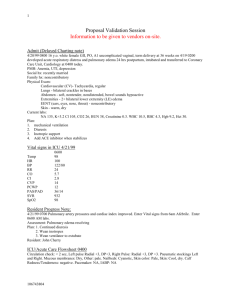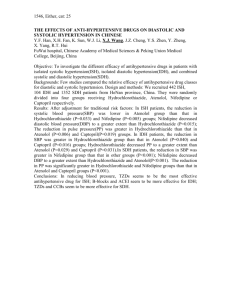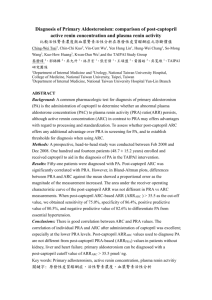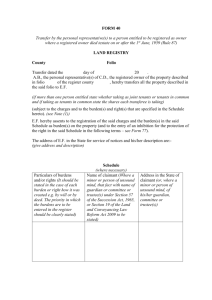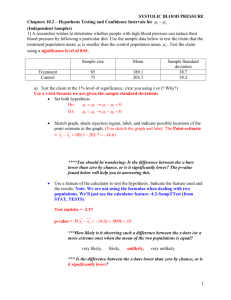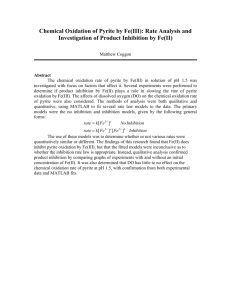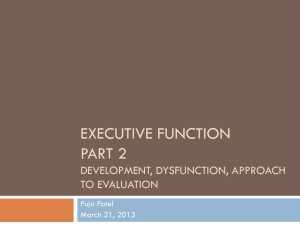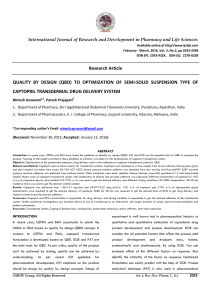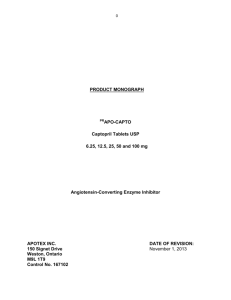acei in hypertension and congestive heart failure
advertisement
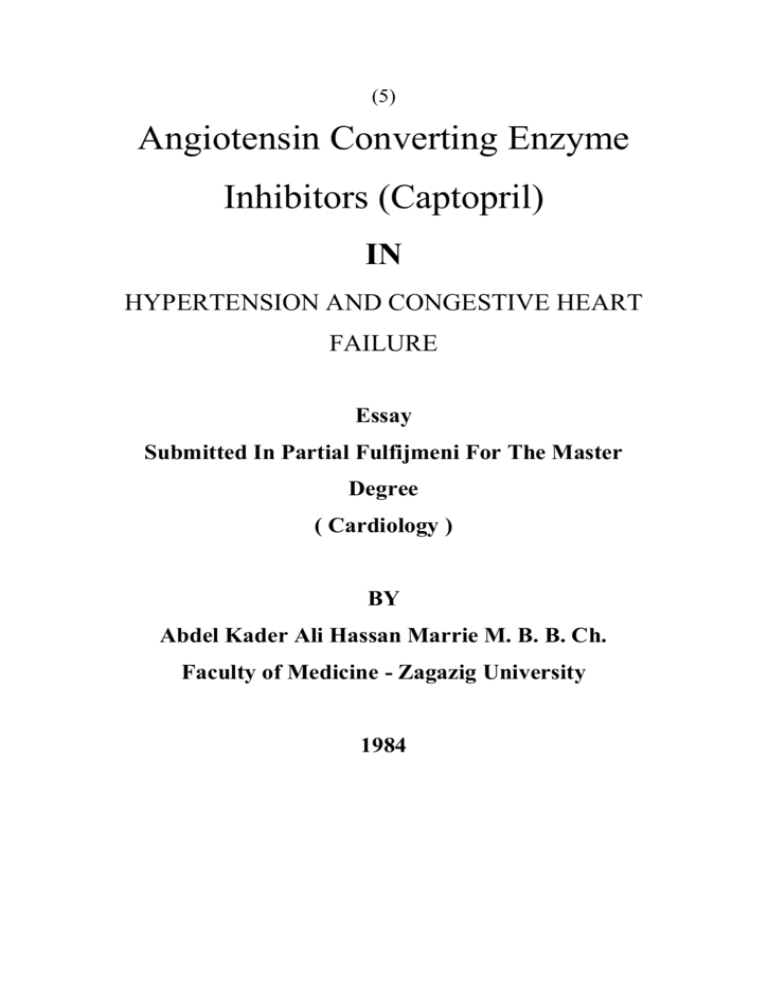
(5) Angiotensin Converting Enzyme Inhibitors (Captopril) IN HYPERTENSION AND CONGESTIVE HEART FAILURE Essay Submitted In Partial Fulfijmeni For The Master Degree ( Cardiology ) BY Abdel Kader Ali Hassan Marrie M. B. B. Ch. Faculty of Medicine - Zagazig University 1984 There is no evidence to suggest that captopril exerts all of its pharmacological effects through any other mechanism except inhibition of ACE. It is not a vasodilator, has no direct effects on sympathetic or parasympathetic nerve function, does not interfere with receptor activation of any angonist tested, nor does it enter the brain. Cqse .et al. , (1978). Although inhibition of ACE seems a clear and simple enough explanation for how captopril exerts its cardiovascular effects, the consequences of such inhibition are, in fact, complicated and surprising . Undoubtedly, the most important practical aspect of ACE inhibition has been its striking efficacy in hypertension. Thus, the effectiveness of captopril in both human and animal hypertension with low or normal plasma renin activity has provided strong evidence that the renin-angiotensin system is a contributing and/or causative factor in almost all forms of hypertension; as a corollary, plasma renin activity is a poor indicator of such a contribution if it is not obviously high. Fortunately, from the clinical standpoint, this means that measurements of plasma renin activity are not necessary in order to predict responders to captopril since the effectiveness of the drug is poorly correlated with pre-drug planar renin activity. In renovascular hypertension where high plasma renin activity is often apparent, reductions in blood pressure by inhibition of ACE with captopril is rapid ( Case et al. , 1978 ) and consistent with the onset of inhibition of pressor responses to AI (Ferguson et al., 1977). Furthermore, antagonists of All receptors such as serializing (Hollenberg; et al., 1979), are also effective in reducing blood pressure in renovascular hypertension with high PRA. The effectiveness of captopril in hypertension associated with low or normal PRA is, however, not so readily understood. Thus, while it is tempting to suggest that captopril acts to reduce blood pressure in chronic renal hypertension by the same mechanism as in acute renal hypertension. Several possible mechanisms of the antihypertensive activity still related to ACE inhibition may account for the effectiveness of captopril in low or normal renin states of hypertension: 1) Arterial wall rennin . Arterial vascular tissue of several species including man contains all of the components necessary for the local generation of All Ganten et al. ,(1976) . This local vascular All formation is of functional significance responds to typical stimuli, thus, inhibition of locally generated All might explain how renin inhibitors and captopril reduce blood pressure in these models, (Antonaccio jst al., 1979) . All antagonists may not be effective because of their relatively large molecular bulk, which does not allow them to penetrate to the local vascular site of All formation. Support for such a hypothesis is provided by studies in which acute bilateral nephrectomy either raised or had no effect on blood pressure, Swales, (1976), whereas ACE inhibition by teprotide Brunner et al., (1978) still caused reductions in the acutely nephrectomized hypertensive rats Swales, (1976). 2) Bradykinin accumulation, ACE is the same enzyme as kininase II, which is responsible for the inactivation of bradykinin, inhibition of which causes marked potentiation of the cardiovascular effects of BK. Thus, it is conceivable that accumulation of BK might occur with chronic inhibition of ACE and be partially responsible for some of its effects. This is a very difficult hypothesis to test since local accumulation of BK might not be reflected in circulating plasma or urine levels but which could have very profound cardiovascular effects through renal vasodilation, diuresis, natiuresis, and inhibition of sympathetic function. Unfortunately, the literature is not consistent in relation to BK levels after captopril, some investigators reporting increases in kinin levels McKinstry et al., (1978). 3) Prostaglandin release Enhanced cardiovascular responsiveness to BK administration has been shown in one study to be partially mediated through the release of renal prostaglandins Murthy et al. , (1978). Furthermore, captopril did not change urinary PGE2 levels in renovascular hypertensive human patients Bravo et al. , (1979). 4) Aldosterone. Captopril has been consistently shown to decrease aldosterone secretion in hypertensive animals McCaa et al. , (1978) and humans Case, et al. , (1978). Since this is undoubtedly a consequence of inhibition of All formation, it is difficult to determine how much of the antihyper-tensive action of captopril is directly related to reductions in All formation compared with how much is due to reductions in aldosterone secretion. Certainly, the acute antihypertensive effects of captopril are not due to aldosterone inhibition since reductions in blood pressure were unaltered after bilateral adrenalectomy either prior to or following captopril administration Adler et al. , (1979). On the other hand, the reductions of blood pressure in sodium-depleted normotensive dogs after chronic captopril could be reversed by simultaneous administration of aldosterone sufficient to raise plasma levels to normal McCaa jat al., effects-perhaps (1978). It seems likely that the chronic the secondary reduction in pressure observed in human patients-of captopril in hypertensive patients involves inhibition of aldosterone release. 5) Sodium and water excretion. Captopril has been shown to cause increases in sodium and water excretion and therefore might decrease blood pressure by reducing sodium content and/or flux in vessels, as well as by reducing plasma volume. However, this appears unlikely since the diuretic and natiuretic actions of captopril can be dissociated from changes in blood pressure. In both animals Antonaccio et al., (1979) and human hypertension Atlas et al. , (1979). captopril can reduce blood pressure with associated increases, decreases, or unaltered excretion of sodium. Also, captopril does not reduce plasma volume Cody et al., (1978). In conclusion, captopril is an effective anti-hypertensive agent in most forms of hypertension. Its only mechanism of action appears to be inhibition of ACE but the consequences of this inhibition are complicated and not clarified as yet. Degrees of blood pressure reduction are poorly correlated with pre-drug ERA but greater reductions in blood pressure are observed in high renin hypertensive states.

